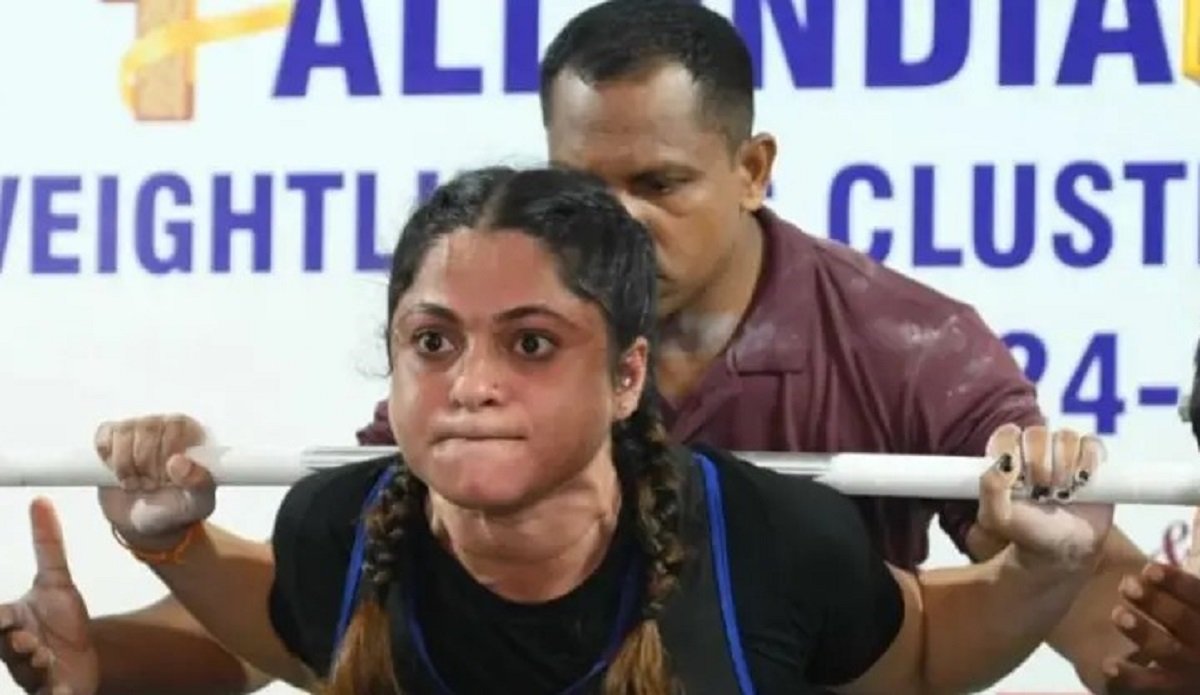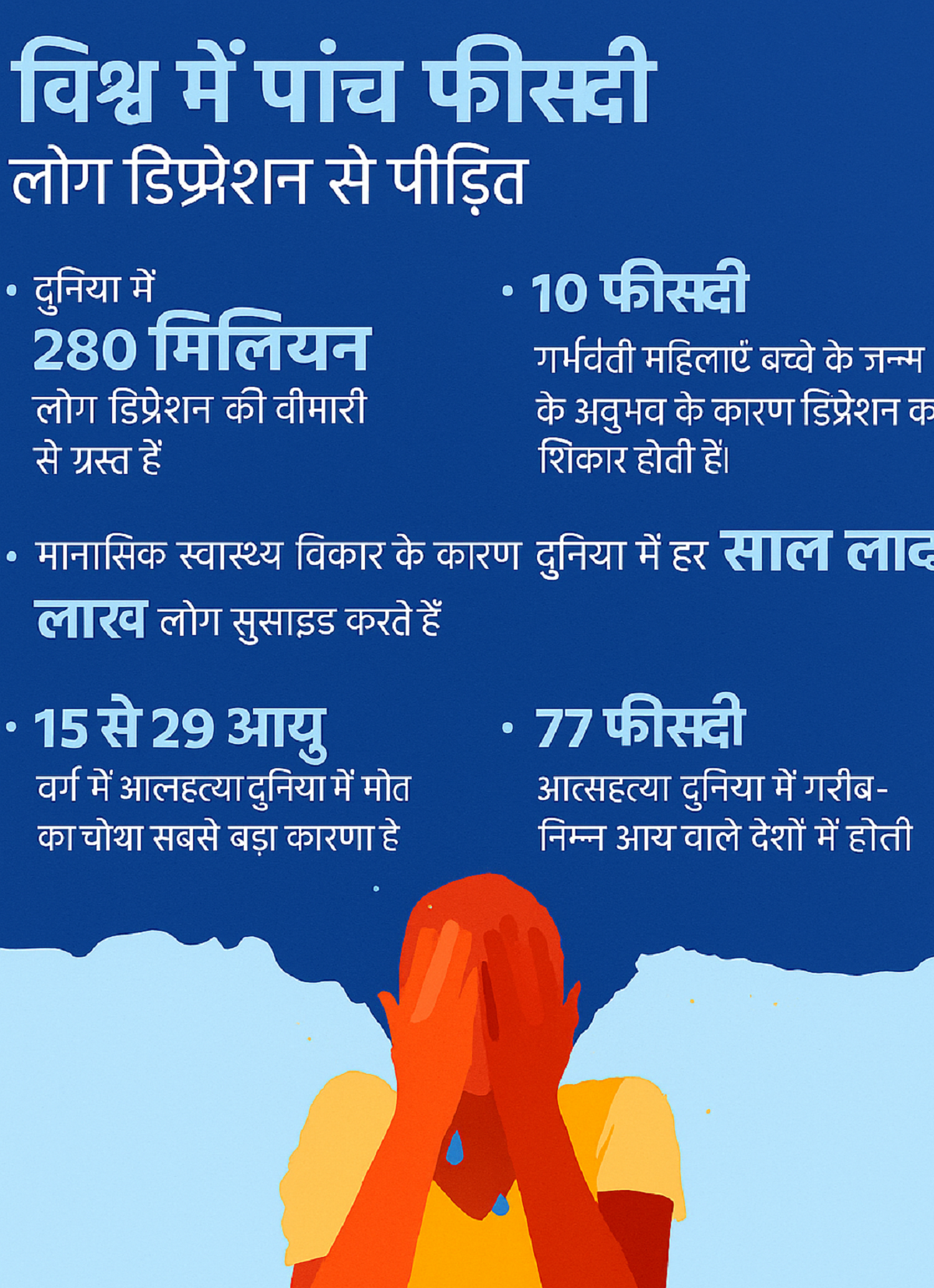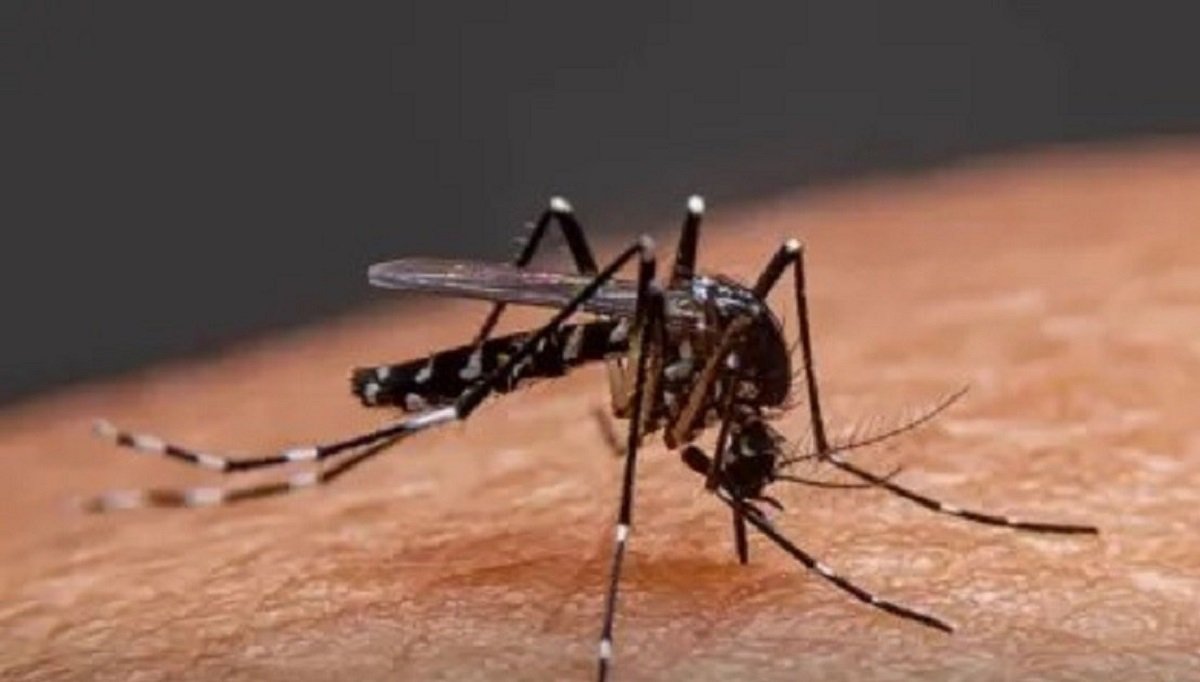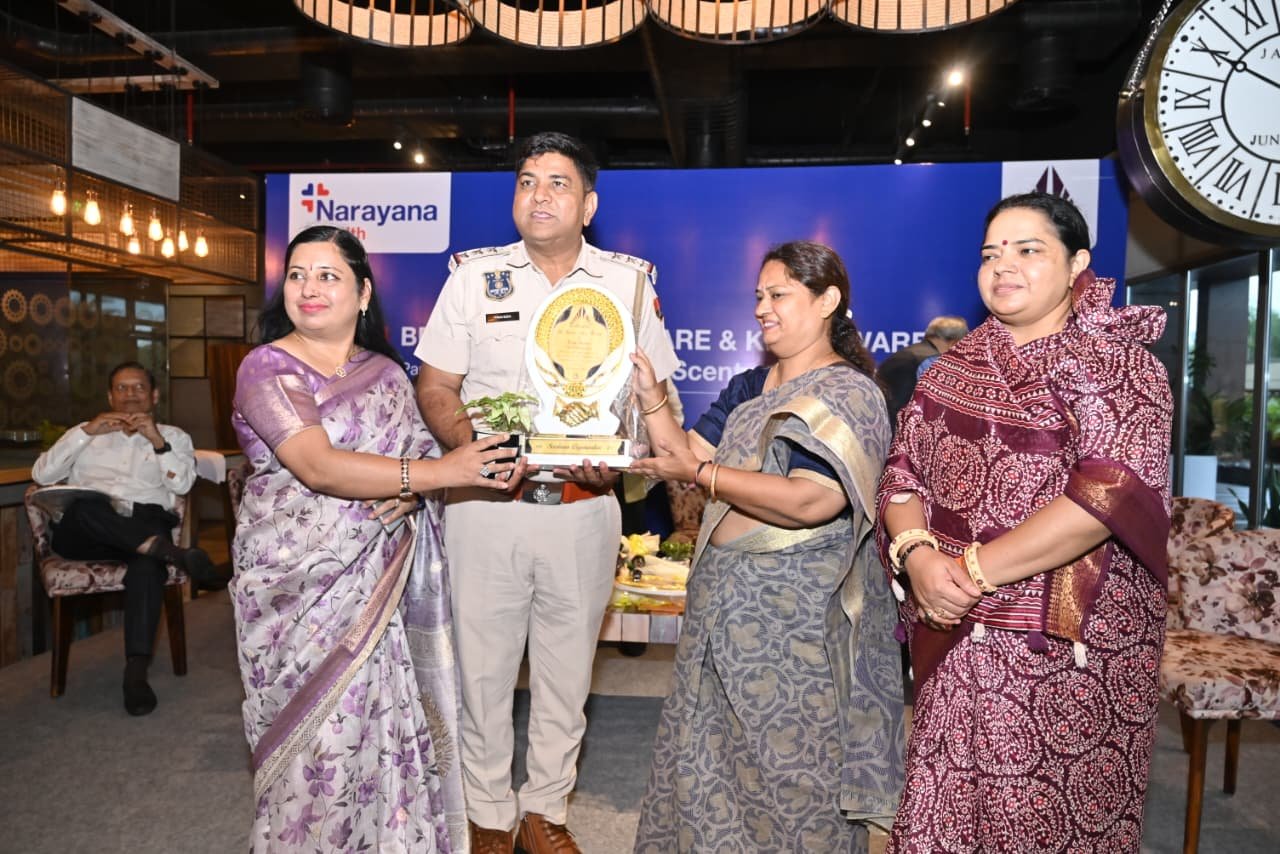Health
The Neuralink device will enable a paralysis patient to walk as well

Contents
The company receives approval for trial recruitment, and the robot will install a chip in its brain
The Independent Institutional Review Board has approved the recruitment of participants for Elon Musk’s brain-chip business Neuralink’s initial human study. As a result, Neuralink will now be able to find volunteers for its human experiments. Even the blind will be able to see via the chip if the human testing is successful. Patients with paralysis will have mental capacity and computer skills.
The first patient will soon receive the Neuralink device, according to Elon Musk. The entire body can regain movement thanks to it. Think about Stephen Hawking having this. An internationally renowned British cosmologist and physicist, Stephen Hawking. He had a condition known as amyotrophic lateral sclerosis. The entire body’s movement is stopped when this sickness strikes.
The completion of the study will take roughly 6 years.
Participants in the trial can have quadriplegia brought on by an ALS or cervical spinal cord damage, according to Neuralink. He should be at least 22 years old. The completion of the study will take roughly 6 years. The participant will be reimbursed for study-related expenses during this time, including transport costs to and from the study site.
The business plans to conduct trials to examine how patients respond to the device. The N1 implant, R1 robot, and N1 user app’s security will also be examined. The company has not yet provided information regarding the trial’s start date or participant count. The US Food and Drug Administration had earlier in May given the business the go-ahead for the trial.
The Neuralink gadget will be surgically implanted in the brain.
The N1 implant will be surgically inserted into patients in the region of the brain that regulates movement. The R1 robot will do this procedure. All N1 implant holders will be required to operate the computer. The N1 user app will also be included with the N1 implant. These individuals will then be required to provide feedback on the entire system.
The Neuralink device: what is it?
1. Computer will function with simply thought
A coin-sized gadget has been produced by Neuralink. It is known as Link. Through brain activity (neural impulses), this technology provides direct control of a computer, smartphone, or any other device. For instance, a paralysed person who has a chip inserted in his brain will be able to move the mouse cursor by simply thinking about it.
2. An invisible cosmetic chip
Neuralink stated that it is developing a fully implanted, virtually undetectable brain-computer interface that will allow users to manage a computer or mobile device wherever they are. Moving parts of the brain will be implanted with micron-scale threads. Each thread connects the implant with a number of electrodes.
3. Design of robotic systems
The business claimed that because the threads on the connections are so thin and flexible, a human hand cannot install them. The business has created a robotic method to accomplish this. This will make it possible to implant the thread effectively and firmly.
Neuralink app has also been created in addition to this. Brain activity enables direct control of your keyboard and mouse with just your thoughts.
A chip will lead to a revolution.
According to Neuralink, the primary objective of our technology is to enable people with paralysis to operate computers and mobile devices. We aim to empower them with autonomy. We want these people to be able to use our technology to express their talent in photography. Numerous neurological conditions could potentially be treated using this method.
Will it be safe to use?
When implanting a chip, there is always a danger linked with general anaesthesia. In such a case, risk can be decreased by shortening the process time. The company has created a neurosurgical robot for this purpose in order to implant the electrodes more effectively.
Furthermore, the robot has been built to put a thread through a 25 mm diameter hole in the skull. When a gadget is placed into the brain, there is also a risk of haemorrhage. To reduce this, the company is employing micro-scale threads.
application of a brain-computer interface
The technique used by Elon Musk to construct the chip is known as Brain-Computer Interfaces, or BCIs for short. For years, many other companies have been working on this. This technology employs microscopic electrodes implanted in the brain to “read” impulses from neighbouring neurons. These impulses are subsequently decoded by software into orders or actions, such as moving a cursor or a robotic arm.
Brain Control Interfaces was founded six years ago.
Musk debuted his implantation robot two years ago and created the company Brain Control Interfaces six years ago. At a ‘Show and Tell’ session held six months ago at Neuralink’s California offices, Musk gave an update on the development of his invention.
Through telepathy, the monkey typed
Musk also displayed a clip of a chimpanzee playing pinball without a joystick at the occasion. The monkey used telepathy to type as well. The Neuralink team also ran a surgical robot demonstration. It demonstrated how the procedure is completed entirely by the robot.
Andhra Pradesh
pregnant-weightlifting-145kg-feat-redefines-strength-

Contents
Andhra Pradesh, Oct.31,2025:Pregnant weightlifting has entered the public consciousness in a dramatic way, as one woman’s extraordinary feat pushes the boundaries of strength, motherhood and societal expectation. The story of this lift—145 kg at seven months’ pregnancy—sparks both awe and debate- what happens when pregnancy meets serious athletic performance-
Who is the athlete behind the lift
The central figure is Sonika Yadav, a constable in the Delhi Police, who competed in the All India Police Weightlifting Cluster 2025‑26 held in Andhra Pradesh.
Her back-story adds layers to this achievement-
- She joined the Delhi Police in 2014 and has been active in sports, including kabaddi and powerlifting.
- In 2022 she began a more rigorous fitness journey when she was considerably overweight and struggling with lifestyle diseases. She shifted into weightlifting training.
- In 2023 she won gold in a state deadlift competition and then, when she realised she was pregnant, instead of stepping back she chose to continue with medical supervision.
Her motivation: to break the narrative that pregnancy equals pause; she has said she wanted to show that motherhood and athletic ambition can go hand-in-hand.
145 kg and a bronze medal
During the competition, Sonika lifted a total of 145 kg in the deadlift portion, while being seven months pregnant.
Specifically-
- She first performed 125 kg in squats, 80 kg in bench-press, then moved on to a planned 135 kg deadlift but raised it to 145 kg.
- She secured a bronze medal in the 84 kg category at the All India Police Weightlifting Cluster.
- In her own words: she didn’t want pregnancy to be seen as a limitation, and she thought: “If they [other pregnant athletes] can do this, why can’t I?”
This event has been widely shared on social media and covered by major news outlets, capturing public attention for both its positive and contentious implications.
Public reaction
The achievement generated a two-fold reaction: celebration and concern.
The celebration
Many applauded the boldness and determination of Sonika — a woman in uniform, yet also a mother and soon-to-be mother, showing strength in every sense. Her message: pregnancy isn’t a weakness. Her story inspired many who feel sidelined by cultural expectations.
The alarm
On the flip side, commentators raised questions about safety. Some described the act as “risky” or “irresponsible”, warning that heavy lifting while pregnant could endanger the mother and unborn child. According to one report:
“…questions whether heavy occupational lifting during pregnancy is safe.”
This mix of praise and caution places pregnant weightlifting in a contested zone — between empowerment and risk.
Is pregnant weightlifting safe
What experts say
According to senior obstetrician Dr. Nikhil Datar, each pregnancy is unique-
“Some women with medical clearance and supervision can continue strength-training safely. But this case is special – an athlete with years of training.”
He cautions:
“Heavy occupational lifting or high-intensity sets are not generally recommended.”
Key considerations
When assessing pregnant weightlifting the following matter-
- The woman’s baseline fitness level and training history (in this case, years of powerlifting).
- Medical clearance and ongoing monitoring. Sonika reported she consulted her doctor and continued under supervision.
- The intensity and load: what constitutes “heavy” weight differs based on individual capacity.
- The stage of pregnancy: Seven months is advanced, and physiological changes (hormones, joint laxity, heart rate, oxygen demands) become significant.
- The difference between recreational strength training and competitive heavy lifts in a setting.
Thus: pregnant weightlifting can be done safely under certain conditions — but what Sonika did is exceptional, not standard.
Guidelines for strength training during pregnancy
Given the above, what can pregnant individuals consider if they want to stay active through strength training? Below are general guidelines (not personalised advice)-
Consult your healthcare provider
Always begin with a prenatal check-up and get a plan tailored to your health, fitness history, and pregnancy stage.
Choose appropriate load and intensity
- Focus on moderate resistance: safe strength work rather than maximal lifts.
- Avoid sudden heavy loads or maximal single-reps unless under expert supervision.
- For example: walking, body-weight strength, supervised machines may be preferable.
Monitor your body’s signals
Be attentive to-
- Pelvic, abdominal or back pain.
- Dizziness or breathlessness.
- Swelling or reduced foetal movements.
- Joint instability (due to pregnancy hormones).
Prioritise position, posture and stability
- Use machines or supported benches rather than unstable loads.
- Avoid lying flat on back after first trimester if instructed by physician.
- Maintain core engagement, minimise valsalva (holding breath during lift).
Avoid extremes
High-intensity or heavy occupational lifting (e.g., very heavy deadlifts) carry higher risk and require expert monitoring. As Dr. Datar notes, Sonika’s case is not the baseline.
Shift goals from “performance” to “health and wellness”
During pregnancy, the goal can shift: maintain strength, promote circulation, assist recovery and mood — rather than chasing personal records.
For further reading on exercise in pregnancy see the NHS guidance or the American College of Obstetricians and Gynaecologists (ACOG) resources.
The bigger narrative
Beyond the technicalities, Sonika’s story speaks to bigger themes surrounding pregnant weightlifting and women’s roles in society.
Challenging the “pause” narrative
In many societies, pregnancy is framed as a period of rest, withdrawal or at least drastically reduced activity. Sonika turned that on its head-
“I didn’t want pregnancy to be seen as a limitation.”
Role-modelling strength for women
Her lift sends a message: a woman can be a mother, a professional (police officer) and an athlete — roles often siloed by expectation. The wider public reaction (both cheers and criticisms) spotlights how unusual this is still considered.
A conversation starter on risk, agency and support
While not everyone should attempt what she did, her choice raises the question: how much agency do pregnant women have in shaping their bodies, ambitions and physical lives? And how many feel constrained by societal expectations of motherhood?
What her story signals for the future of sport
Sporting bodies have begun adapting for pregnant athletes (e.g., in track and field, team sports). The question of pregnant weightlifting invites reflection on how training protocols, coaching, athlete-care and cultural practices might evolve.
What this means for women in sport
Pregnant weightlifting may sound provocative, even controversial—but the story of Sonika Yadav shows that with preparation, guidance, and experience, boundaries can be pushed.
What we learn-
- Fitness and ambition need not stop during pregnancy — but must be recalibrated.
- Every pregnancy differs; what’s feasible for one woman isn’t for another.
- Societal narratives around pregnancy often restrict rather than empower; stories like this challenge them.
- Fitness professionals, doctors and athletes must collaborate more deeply to develop safe pathways for pregnant athletes.
Caution remains important. This is not a call for every pregnant woman to take up heavy deadlifts. Instead, it signals an evolving understanding of what pregnancy can look like in terms of physicality and agency.
Breaking News
Mental health crisis in India youth with new data- from soaring anxiety & depression to the hidden pressure of social media-

Contents
New Delhi, Oct.14,2025:Mental health crisis in India youth is no longer a whisper from the fringes—it has become a loud alarm that demands attention. Across urban and rural regions, among students and young professionals, anxiety, depression, emotional distress, and suicidal thoughts are rising sharply. This article unpacks the data, digs into the causes, and highlights what can be done before the crisis deepens further-
Alarming statistics- how widespread is the issue
Study in Tier-1 cities
A recent study conducted by SRM University AP, Amaravati, published in the Asian Journal of Psychiatry, surveyed 1,628 students (aged 18–29) across eight major Indian cities (Delhi, Mumbai, Bengaluru, Chennai, Hyderabad, Pune, Ahmedabad, Kolkata). Findings include:
- Nearly 70% of students reported moderate to high anxiety.
- About 60% showed signs of depression.
- Over 70% felt emotionally distressed.
- 65% struggled to regulate behaviour or emotions.
Other relevant data
- Among adolescents in Telangana and Karnataka (ages 10-18), over 60% reported sleep difficulties; 70% reported problems focusing in class.
- In India’s workforce and academic settings, nearly 75% of high school students sleep fewer than 7 hours due to late-night social media use; many feel career uncertainty.
- UNICEF reports indicate only 41% of young people in India believe it’s good to seek help for mental health problems, compared to ~83% in many other countries.
- Treatment gap and professional shortage
- India has about 0.75 psychiatrists per 100,000 people, far below WHO recommendations.
- Treatment gap for mental disorders is estimated between 70% to 92%, depending on region and disorder.
These numbers show that mental health crisis in India youth is wide, serious, and multi-dimensional.
Case studies- when social media becomes a trigger
While data gives scale, real stories show the human toll. They mirror many of the trends uncovered by recent studies and add urgency to the need for prevention.
- Case 1: In Raipur (Chhattisgarh), a 22-year-old man who made reels and videos felt despair when his recent posts didn’t get many views. He increasingly isolated himself and one day injured himself via cutting his wrist. Family intervened just in time and got medical help.
- Case 2: In Bhopal, a 23-year-old woman preparing for competitive exams felt immense pressure, loneliness, and repeated failures. She attempted suicide when she felt she had no outlet—this, despite being academically good. Intervention came in time, with help from family and mental health professionals.
These stories underline how external validation (likes, views, status), social isolation, peer comparison, and academic pressure can interact with vulnerabilities, causing crises.
pressure, lifestyle, pandemic impact
Academic, peer & social media pressure
Students cite overwhelming competition, expected academic success, job prospects, etc. Social media amplifies peer pressure: lifestyle comparisons, social status, likes/views become measures of self-worth. Studies show high social media usage correlates with anxiety, sleep issues, and emotional distress.
Lifestyle changes and lack of physical activity
In many cases, children and young adults have decreased physical activity, increased screen time, poor sleep habits, and irregular routines. These contribute to emotional instability, mood disorders, and even physical health issues. This is in line with child psychiatry experts’ observations. (Your original cases about media, gaming addiction, lack of physical activity illustrate this.)
Pandemic after-effects and isolation
COVID-19 lockdowns, disruptions in schooling / college, increased remote/online interactions have caused prolonged isolation. Reports show that youth aged 18-24 were among the worst affected in their mental health scores post-pandemic.
Lack of early support, stigma & awareness
Although awareness has increased, many young people do not recognize early signs. Many are reluctant to seek help due to fear of being judged or due to lack of access. UNICEF data shows low rates of belief in seeking mental health support in India relative to other countries.
physical and psychological links
The mental health crisis in India youth doesn’t only affect emotions—it has broader health and social consequences.
- Physical health risks: Conditions like hypertension, diabetes, heart disease are rising in tandem with mental stress. Stress hormones affect sleep, diet, and bodily systems. In your source data, psychiatric experts note links between mental distress and these physical disorders.
- Emotional regulation & behaviour problems: Youth may have difficulty managing mood, behaviour, impulsivity. Increased substance use, self-harm, or suicidal ideation may follow, especially when pressure or rejection (e.g. from social media) is perceived.
- Academic, social, relational impact: Decline in performance, drop in self-esteem, withdrawal from friends/family, breakdowns in relationships. As in the cases you describe.
- Long-term risk: Early mental health conditions often predict recurrent problems, even in later adulthood. Unaddressed depression or anxiety may lead to chronic illness, lower life satisfaction.
studies, support systems, campaigners
University & survey reports
- The SRM University AP study (1,628 students) as mentioned above.
- Studies on adolescent girls’ mental health, including awareness programmes in remote or rural areas (e.g. Assam, Telangana).
Helplines & tele-mental health
- Tele-MANAS in Karnataka has received over 65,000 calls since its launch in 2022, supporting young people in crises.
- New mental health helpdesk for medical students in Telangana (T-JUDA) to offer peer support, counselling.
Government & policy efforts
- Economic Survey 2024-25 underscores need for preventive mental health education, digital services, workplace policies.
- UNICEF’s “Mental Well-being for Young People” approach that emphasizes integrated services, early detection, reducing stigma.
Community, grassroots action
- Peer-led programmes, student support groups, awareness in schools.
- Workshops and community health clinics in tribal or rural areas improving access (e.g. Gadchiroli study).
What needs to change-solutions and early interventions
To address the mental health crisis in India youth, multiple coordinated steps are essential:
Early identification & screening
- Integrate mental health screening in schools, colleges. Trained counsellors should observe signs: sleep problems, withdrawn behaviour, changes in mood or performance.
- Use validated tools, possibly AI/technology-assisted where feasible, especially after the rise in digital mental health studies.
Awareness & destigmatization
- Reduce shame attached to mental illness. Public campaigns, peer testimonials, role models speaking out.
- Educate parents, teachers, employers about what mental illness may look like, that it can be treated, and help exists.
Improve access to professional care
- Increase number of psychiatrists, psychologists, psychiatric social workers. WHO recommendation is higher than current ratio.
- Enhance tele-mental health services: helplines like Tele-MANAS, online counselling.
Support systems in institutions
- Schools and colleges should have counselling centres, peer support cells. Emotional support should be part of curriculum.
- Employers should build policies allowing mental health days, wellbeing programs, reduce burnout.
Healthy lifestyle & digital balance
- Promote physical activity, sleep hygiene, limits on screen time.
- Teach young people digital literacy: how social media works, how comparison and algorithms can amplify distress.
turning awareness into action
The mental health crisis in India youth is a reality. It’s visible in statistics, in heartbreaking case studies, and in every city and rural area where young people suffer in silence. But there is also hope. Awareness is rising. Institutions, researchers, policy makers, and community actors are stepping in.
Breaking News
Excess Rice and Roti Consumption Linked to Rising Diabetes Risk in India – ICMR Study 2025-

Contents
New Delhi, Oct.10,2025:The ICMR Study 2025 has issued a stark warning to Indian households: overconsumption of rice and roti — staples of the Indian diet — could be driving an alarming rise in diabetes, obesity, and metabolic disorders across the country. Conducted by the Indian Council of Medical Research (ICMR) in collaboration with the Madras Diabetes Research Foundation (MDRF), this large-scale study offers deep insight into how India’s eating patterns are affecting public health-
According to the research, 62% of India’s daily energy intake comes from carbohydrates, primarily white rice, wheat, and processed grains. These foods, though culturally integral, are significantly contributing to poor metabolic health outcomes.
High Carbohydrate Dependence in Indian Diets
The ICMR Study 2025 examined food consumption habits across 30 states and union territories, involving adults aged 20 years and above. The results reveal a concerning pattern — most Indians rely heavily on refined carbohydrates while consuming inadequate protein and fibre.
The data showed-
- Carbohydrates: 62.3% of total daily energy
- Fats: 25.2%
- Proteins: only 12%
The study also highlighted that processed grains contribute 28.5% and whole grains contribute 16.2% to total carbohydrate intake. Such an imbalance between nutrient groups makes Indians highly vulnerable to metabolic conditions like Type 2 diabetes and obesity.
Diabetes and Obesity Connection Explained
Published in Nature Medicine, the ICMR study notes that individuals consuming the highest levels of carbohydrates are 30% more likely to develop diabetes compared to those on low-carb diets. Additionally, the risks of general obesity increase by 22% and abdominal fat accumulation by 15%.
India already accounts for nearly one-fourth of the world’s diabetes cases, a number that continues to grow faster than in most countries. The report attributes this to excessive carbohydrate consumption, coupled with a sedentary lifestyle.
Processed vs Whole Grains – The Hidden Truth
While traditional wisdom suggests that whole grains like millets or brown rice are healthier alternatives, the ICMR Study 2025 warns that merely switching from processed to whole grains may not be enough.
The research indicates that even unprocessed wheat or millet flours do not significantly reduce diabetes risk when consumed in excess. This is because high carbohydrate intake — regardless of its source — leads to elevated blood sugar and insulin resistance over time.
Nutrition experts emphasize balancing grains with protein-rich foods and fibre, which help slow down sugar absorption.
What Experts Are Saying About the Findings
Dr. Vibhuti Rastogi, Senior Dietitian at the Institute of Human Behaviour and Allied Sciences (IHBAS), told that Indian diets are indeed “too carb-heavy and too low in protein,” which accelerates the onset of lifestyle diseases.
“Both refined and simple carbohydrates, such as sugar, can increase diabetes risk. But when combined with low protein intake, the damage happens faster,” Dr. Rastogi explained.
Similarly, Nazneen Hussain, Head Dietitian at Dietetics for Nutrify Today (Mumbai), highlighted that the type of carbohydrate also matters.
“If you eat rotis made from refined flour, they’re almost as bad as polished rice. Choose coarse or fibre-rich flour to slow blood sugar spikes,” she advised.
She also noted that brown rice or unpolished small-grain rice are healthier alternatives but must be eaten in moderation and with fibre, dal, or vegetables for balance.
Regional Differences in Health Risks
The study found striking regional variations in obesity and metabolic disease rates:
- North India: 54% overweight, 37% obese, and 48% had abdominal obesity
- East India: Showed the best metabolic health indicators nationwide
- Overall: 83% of participants showed at least one metabolic risk factor
Additionally, 27% of adults nationwide suffer from hypertension, a condition often linked with excess carbohydrate and sodium intake. Interestingly, these trends showed little regional difference — indicating a nationwide dietary imbalance.
How to Reduce Carbohydrate-Related Health Risks
Experts recommend gradual dietary transitions rather than drastic eliminations. Here’s how to make daily Indian meals healthier, based on ICMR’s recommendations:
- Reduce refined grains: Replace white rice with brown rice, millets, or quinoa.
- Increase protein intake: Add dals, paneer, eggs, tofu, or lean meats.
- Add healthy fats: Use nuts, seeds, and olive or mustard oil instead of saturated fats.
- Control portion sizes: Especially for rice and roti at dinner.
- Include fibre-rich foods: Vegetables, salads, and legumes improve digestion and metabolism.
Lifestyle Changes to Control Diabetes Risk
Beyond diet, the ICMR Study 2025 found that 61% of participants were physically inactive. Regular exercise can reduce Type 2 diabetes risk by up to 50%, according to global health data.
Recommended lifestyle changes–
- Walk or exercise at least 30 minutes daily
- Practice yoga or light resistance training
- Limit sugary drinks and late-night snacking
- Sleep 7–8 hours daily
- Get routine blood sugar check-ups, especially if above 30
Combining these habits with balanced nutrition can reverse early-stage metabolic disorders, experts say.
The Way Forward for a Healthier India
The ICMR Study 2025 is a wake-up call for India’s food culture. While rice and roti remain dietary staples, overreliance on these high-carb foods is quietly eroding public health. With nearly 83% of adults showing metabolic risks, the nation must rethink its traditional plate.
Nutrition experts unanimously agree — moderation, balance, and movement are key. By incorporating more proteins, healthy fats, and fibre, alongside regular physical activity, India can curb the rising tide of diabetes and obesity.
Breaking News
Molar Cesarean Scar Pregnancy, Rare Ectopic Pregnancy, Dr Priyanka Thakur Sharma, Rajasthan Hospital Jaipur-

Contents
Jaipur, Sep.24,2025:Saving life and saving uterus became a reality at Rajasthan Hospital, Jaipur, where Dr. Priyanka Thakur Sharma, Consultant Gynaecologist, successfully diagnosed and managed an extremely rare molar caesarean scar pregnancy (molar CSP). This case is notable as only the 10th ever reported worldwide, making it a landmark in obstetric care-
According to Dr. Priyanka, caesarean scar pregnancy itself is rare, and its combination with molar pregnancy is exceptionally uncommon, with only nine documented cases in medical literature. Early diagnosis and timely intervention in this case saved both the patient’s life and her uterus.


Understanding Caesarean Scar Pregnancy
A caesarean scar pregnancy (CSP) occurs when a fertilized egg implants on the scar tissue from a previous C-section rather than in the uterine lining. This rare type of ectopic pregnancy can lead to severe bleeding, uterine rupture, and maternal complications if not managed promptly.
According to MedlinePlus, CSP requires immediate identification and expert care to prevent life-threatening outcomes.
Molar Pregnancy and Its Risks
A molar pregnancy is an abnormal form of pregnancy in which abnormal trophoblastic tissue grows inside the uterus. It may be partial or complete and can occasionally progress to gestational trophoblastic neoplasia (GTN) if untreated.
When combined with caesarean scar implantation, the risk of uncontrolled haemorrhage and uterine rupture increases drastically, making early intervention critical. Most cases of molar CSP often result in hysterectomy to control bleeding.
Patient Case-Initial Symptoms and Evaluation
The patient, a 34-year-old woman with two previous C-sections, presented with continuous vaginal bleeding for one month and increasing abdominal pain for 10 days. She had a history of miscarriage two months earlier and another miscarriage six months prior.
On admission, she showed signs of shock: low blood pressure, high pulse, and haemoglobin of 7 gm/dl. Initial ultrasound suggested a ruptured caesarean scar ectopic pregnancy with a possibility of molar tissue, later confirmed by CT angiography.
Given the risk of massive haemorrhage, the multidisciplinary team acted swiftly to stabilize her condition.
Urgent Intervention- Bilateral Uterine Artery Embolization
To control potential excessive bleeding, the Interventional Radiology (IR) team performed bilateral uterine artery embolization (UAE) before surgery. The patient also received 2 units of blood preoperatively.
This preemptive step significantly reduced intraoperative bleeding, enabling the surgical team to proceed with uterus-preserving surgery instead of hysterectomy.
Surgical Management and Uterus Preservation
During surgery, 2 Liters of blood were found in the abdominal cavity, along with rupture at the previous C-section scar and abnormal molar tissue.
Dr. Priyanka Thakur Sharma’s team completely excised the ectopic tissue and carefully closed the uterus in layers. Both the patient’s life and uterus were preserved, marking an exceptional outcome in such a high-risk scenario.
Postoperative reports showed serum β-hCG levels dropped from 55,000 preoperatively to 188, confirming successful removal of the molar tissue. Biopsy revealed partial hydatidiform mole, ensuring accurate diagnosis and follow-up.
Postoperative Recovery and Follow-Up
The patient recovered rapidly and without complications, highlighting the importance of timely diagnosis and multidisciplinary care.
Follow-up monitoring of β-hCG levels and imaging remains critical to ensure no recurrence or progression to GTN. Early detection and intervention help prevent uterine rupture, excessive bleeding, hysterectomy, and maternal morbidity.
Clinical Importance and Awareness
Molar CSP is extremely rare, with only nine previous global cases reported. Dr. Priyanka emphasizes that awareness among gynaecologists, obstetricians, and radiologists is vital for:
- Timely diagnosis
- Prompt intervention
- Uterus preservation
- Reducing maternal complications and mortality
This case demonstrates how modern medical techniques and expert care can save lives while preserving reproductive potential. For more information, visit American Pregnancy Association.
Lessons for Obstetric Care
This rare 10th case of molar caesarean scar pregnancy underscores the critical importance of-
- Early diagnosis using ultrasound and CT angiography
- Interventional radiology for haemorrhage control
- Meticulous surgical removal with uterus preservation
- Postoperative monitoring of β-hCG levels
Dr. Priyanka Thakur Sharma’s timely management at Rajasthan Hospital successfully saved the patient’s life and her uterus, providing an important learning model for obstetric emergencies worldwide.
Breaking News
क्या रात में वाई-फ़ाई बंद करना चाहिए- विशेषज्ञों की राय और स्वास्थ्य पर प्रभाव-

Contents
New Delhi. Sep16,2025:हमारे दिमाग़ में सूचनाओं का आदान-प्रदान न्यूरॉन्स के बीच इलेक्ट्रोकेमिकल सिग्नल्स से होता है।रात के समय शरीर “स्लीप वेव्स” पर काम करता है। ऐसे में कोई भी इलेक्ट्रोमैग्नेटिक फील्ड नींद की-
वाई-फ़ाई और मोबाइल इंटरनेट की आदत
“सो जा बेटे, रात के 12 बज रहे हैं, कब तक मोबाइल फ़ोन देखते रहोगे?”
“बस मम्मी, एक फ़िल्म ख़त्म कर रहा हूँ, दिन में वाई-फ़ाई नहीं मिलता ना!”
नोएडा में रहने वाली सरिता और उनके बेटे अक्षर के बीच ऐसी बातचीत अक्सर होती है। यह केवल एक परिवार की कहानी नहीं है, बल्कि हर घर में मोबाइल और वाई-फ़ाई की लत अब एक सामान्य बात बन चुकी है।
वाई-फ़ाई क्या है और कैसे काम करता है
कई लोग मानते हैं कि वाई-फ़ाई का मतलब Wireless Fidelity है, लेकिन असल में इसका कोई पूरा नाम नहीं है।
यह एक तकनीक है जो हमें बिना तारों के इंटरनेट से जोड़ती है। वाई-फ़ाई राउटर से निकलने वाले रेडियो वेव्स कंप्यूटर, मोबाइल, टैबलेट और स्मार्ट डिवाइस को इंटरनेट एक्सेस देते हैं।
वाई-फ़ाई और स्वास्थ्य पर सवाल
अब बड़ा सवाल यह है कि क्या रात में वाई-फ़ाई ऑन रखने से हमारी नींद या स्वास्थ्य पर असर पड़ता है?
क्या रात को इसे बंद करने से दिमाग़ को आराम मिलता है और नींद बेहतर हो सकती है?
विशेषज्ञों की राय – डॉक्टरों का कहना
दिल्ली-एनसीआर स्थित यशोदा मेडिसिटी में न्यूरो सर्जरी विशेषज्ञ डॉक्टर दिव्य ज्योति के अनुसार:
- अभी तक कोई वैज्ञानिक प्रमाण यह नहीं कहता कि वाई-फ़ाई सेहत के लिए सीधा नुकसान करता है।
- लेकिन तर्क के हिसाब से यह दिमाग़ की इलेक्ट्रिकल इम्पल्स पर असर डाल सकता है।
- इसलिए सावधानी बरतना बेहतर है और रात में वाई-फ़ाई बंद कर देना सेहत के लिए फायदेमंद हो सकता है।
दिमाग़ के इलेक्ट्रिकल इम्पल्स और नींद पर असर
हमारे दिमाग़ में सूचनाओं का आदान-प्रदान न्यूरॉन्स के बीच इलेक्ट्रोकेमिकल सिग्नल्स से होता है।
रात के समय शरीर “स्लीप वेव्स” पर काम करता है। ऐसे में कोई भी इलेक्ट्रोमैग्नेटिक फील्ड नींद की क्वालिटी को प्रभावित कर सकता है।
रात में वाई-फ़ाई बंद करने के फ़ायदे
डॉक्टरों का मानना है कि-
- रात को वाई-फ़ाई बंद करने से गहरी नींद मिल सकती है।
- दिमाग़ को पूरा आराम मिलता है और अगले दिन काम करने की क्षमता बढ़ती है।
- लंबे समय तक रेडिएशन एक्सपोज़र से बचाव होता है।
मोबाइल फ़ोन और रेडिएशन का सच
केवल वाई-फ़ाई ही नहीं, बल्कि मोबाइल फ़ोन भी माइक्रोवेव फ्रीक्वेंसी पर काम करते हैं।
भले ही इनसे निकलने वाली रेडिएशन बहुत कम हो, लेकिन सिरहाने मोबाइल रखकर सोना दिमाग़ और नींद पर असर डाल सकता है।
WHO और अन्य हेल्थ एजेंसियों के अनुसार, बैकग्राउंड रेडिएशन हमारे आसपास पहले से मौजूद है, लेकिन अनावश्यक एक्सपोज़र को कम करना बेहतर होता है।
टेक्नोलॉजी एक्सपर्ट्स की राय
टेक्नोलॉजी विशेषज्ञ मोहम्मद फै़सल अली के अनुसार:
- अभी तक कोई रिसर्च यह साबित नहीं करती कि रात में वाई-फ़ाई बंद करना ज़रूरी है।
- लेकिन लंबे समय तक रेडियो वेव्स के ओवरएक्सपोज़र से नुकसान हो सकता है।
- भारत में पिछले 10 सालों में वाई-फ़ाई और मोबाइल का इस्तेमाल तेजी से बढ़ा है, इसलिए आगे और स्टडी की ज़रूरत है।
संभावित स्वास्थ्य जोखिम
डॉक्टरों और एक्सपर्ट्स के अनुसार, वाई-फ़ाई और मोबाइल रेडिएशन से संभावित खतरे हो सकते हैं:
- गहरी नींद में दखल
- कॉन्सेंट्रेशन और फोकस पर असर
- लंबे समय तक ट्यूमर के खतरे से जोड़कर देखा जाता है
सावधानियां और समाधान
- रात में वाई-फ़ाई राउटर बंद कर दें।
- बेडरूम में राउटर लगाने से बचें।
- मोबाइल को सिरहाने रखकर न सोएं।
- ज़रूरत पड़ने पर Airplane Mode ऑन करें।
- इलेक्ट्रॉनिक डिवाइस का उपयोग लिमिट में करें।
वाई-फ़ाई आधुनिक जीवन का अहम हिस्सा है और इसके बिना जीवन की कल्पना मुश्किल है।
लेकिन स्वास्थ्य विशेषज्ञ सलाह देते हैं कि जितना संभव हो, रात के समय वाई-फ़ाई और मोबाइल रेडिएशन से दूरी बनाकर रखें।
यह ज़रूरी नहीं कि यह सीधा नुकसान करे, लेकिन अच्छी नींद और दिमाग़ की सेहत के लिए सावधानी बरतना हमेशा बेहतर है।
Breaking News
Wi-Fi at night health effects are raising global concerns- Doctors and tech experts reveal how leaving Wi-Fi on while sleeping-

Contents
New Delhi, Sep.16,2025: Wi-Fi at night health effects have become one of the most searched health and technology questions in 2025. Families across India and the world are increasingly debating whether keeping Wi-Fi routers on during sleep hours is safe or harmful.
For example, Sarita, a Noida resident, often argues with her eighth-grade son Akshar late at night:
“Switch off the phone, it’s midnight already.”
“But mom, the Wi-Fi works best at night!”
This playful debate has now turned into a global health conversation. Could Wi-Fi signals, silently filling our bedrooms, be affecting our sleep cycles, brain functions, or even long-term health?
What Exactly Is Wi-Fi and How It Works
Wi-Fi, contrary to popular belief, is not short for Wireless Fidelity. According to the Wi-Fi Alliance, the global industry group, Wi-Fi is simply a brand name for wireless networking technology.
In simple terms, Wi-Fi allows devices like laptops, smartphones, and tablets to connect to the internet without cables. A wireless router creates a WLAN (Wireless Local Area Network) using radio frequency waves.
While the convenience is undeniable, the health impact of prolonged exposure to these electromagnetic fields (EMF) is still under scientific debate.
What Doctors Say
At Yashoda Medisity, Delhi NCR, Dr. Divya Jyoti, Consultant for Minimally Invasive Neurosurgery, explained:
“There is no conclusive scientific proof that Wi-Fi at night directly damages the brain. But logically, since brain impulses are electrical signals, and Wi-Fi depends on electromagnetic fields, there may be interference.”
She emphasized that while no direct evidence exists, caution is wise. Limiting exposure, especially during rest, is considered a good preventive measure.
Brain Impulses and Wi-Fi Radiation Explained
The human brain communicates through neural impulses, also called action potentials. These are tiny electrochemical signals that allow us to sense, think, and move.
Electromagnetic fields (EMFs) from Wi-Fi routers may theoretically interfere with these signals. Though studies remain inconclusive, the concern is that nighttime exposure could:
- Interrupt sleep waves (deep sleep cycles)
- Affect concentration and focus levels
- Lead to long-term neurological risks
Should You Turn Off Wi-Fi at Night
Doctors recommend switching off Wi-Fi at night because:
- Sleep is critical for brain recovery.
- Exposure to constant EMFs may disturb sleep patterns.
- Even if the risk is small, limiting exposure is a safe step.
Dr. Jyoti added-
“At night, our body waves differ—they’re sleep waves. Disruptions could reduce sleep quality, which directly affects daytime performance.”
Wi-Fi vs Mobile Phones- Which Is Worse at Night
Wi-Fi is not the only concern. Mobile phones emit microwave-based radiation, which may pose higher risks due to proximity to the body—especially when kept under pillows or near the head.
While Wi-Fi routers are usually a few feet away, mobile phones often stay within inches, increasing exposure intensity.
Experts warn: Avoid sleeping with mobile phones near your head, even if Wi-Fi is off.
What Technology Experts Think
Technology analyst Mohammad Faisal Ali explained:
“There is no definitive study proving Wi-Fi harms the brain at night. However, overexposure to radio waves in general may have long-term health implications.”
Ali pointed out that:
- Mobile and Wi-Fi usage surged dramatically in the last 10 years.
- Research is still catching up with long-term exposure effects.
- Responsible usage, like switching off at night, is advisable.
Tumors, Sleep, and Focus
Some studies link excessive EMF exposure to-
- Sleep disorders (difficulty falling or staying asleep)
- Reduced concentration and memory issues
- Potential tumor risks (though unproven, still debated)
A report classifies radiofrequency EMFs as “possibly carcinogenic.” This does not mean they cause cancer, but it flags the need for further study.
Practical Tips to Reduce Wi-Fi at Night Health Effects
Here are doctor-approved safety measures:
- Switch off Wi-Fi routers at bedtime.
- Keep routers at least 2-3 meters away from the bed.
- Avoid keeping mobile phones under the pillow.
- Use airplane mode while sleeping.
- Opt for wired internet if possible, for late-night work.
- Balance screen time to protect both eyes and brain.
Myth or Reality
So, are Wi-Fi at night health effects real? The truth is somewhere in between.
- No solid evidence proves serious harm.
- But logical concerns about sleep disturbance and long-term radiation exposure exist.
- Doctors and tech experts agree: better safe than sorry.
Until more definitive research emerges, switching off Wi-Fi at night is a simple, no-cost precaution for better sleep and peace of mind.
Breaking News
Is Too Much Protein Dangerous-Shocking Health Risks You Should Know-

Contents
New Delhi, Sep.16,2025: Is too much protein dangerous? This question has become a trending health debate across social media, fitness circles, and nutrition forums. From protein shakes and powders to protein-rich bars, even everyday foods like cereals and coffee now come in “high-protein” versions.
While protein is indeed an essential nutrient—vital for muscle repair, hormone regulation, and overall health—nutritionists are increasingly worried that our obsession with it may be going too far.
According to, experts warn that excessive protein intake could stress the kidneys, increase the risk of kidney stones, weaken bones, and even displace other important nutrients like fibre from our diet.
So, let’s break it down—is too much protein dangerous, or is it just another diet fad blown out of proportion?
What Exactly Is Protein and Why Do We Need It
Protein is a macronutrient composed of amino acids—often referred to as the “building blocks of life.” It helps repair tissues, build muscles, and plays a role in making enzymes and hormones.
Dr. Emma Beckett, a nutrition expert at South Wales University, explains that proteins are involved in everything from transporting oxygen in the blood (via haemoglobin) to producing keratin in skin and hair.
Without adequate protein, the body is forced to break down muscle tissue to meet its needs.
Common sources of protein include:
- Lean meats (chicken, fish, turkey)
- Eggs
- Beans and legumes
- Nuts and seeds
- Dairy products like milk, yogurt, and cheese
How Much Protein Is Actually Recommended
The British Heart Foundation suggests that adults should consume about 0.75 grams of protein per kilogram of body weight per day.
- For women: ~45 grams/day
- For men: ~55 grams/day
Athletes or people with heavy workout routines may require slightly more, but experts emphasize that more is not always better.
The Rise of High-Protein Diets and Supplements
The global protein supplement industry was valued at $4.4 billion in 2021 and is expected to reach $19.3 billion by 2030.
This explosive growth is fuelled by-
- Fitness influencers promoting “protein maxing” diets on TikTok and Instagram
- Supermarkets pushing “high-protein” versions of snacks and drinks
- The perception that protein equals strength, muscle, and beauty
But here’s the catch: not all protein-rich products are healthy. Many contain artificial sweeteners, excess sugar, and additives.
Fiber vs Protein- Are We Ignoring the Real Superfood
One major concern is that the protein craze has made people neglect fibre, an equally essential nutrient.
Fiber improves digestion, prevents constipation, supports healthy gut bacteria, and lowers the risk of heart disease and type-2 diabetes.
The UK government recommends 30 grams of fibre per day, yet most adults fall far short of this goal.
Dr. Karan Rajan from the NHS highlights that while people are obsessed with protein shakes, fibre is the silent hero of long-term health.
Why Is Protein So Popular Among Fitness Enthusiasts
Protein is attractive because its effects are visible and fast. It helps build muscles, gives a fuller look, and aids in weight loss by increasing satiety.
As Men’s Health magazine editor Paul Kita explains-
“You can’t see your heart getting healthier from eating fibre, but you can see muscles growing from protein. That’s why protein has a vanity factor.”
For women, protein also helps reduce sarcopenia (age-related muscle loss), which becomes more severe after menopause due to hormonal changes.
Is Too Much Protein Dangerous for Your Kidneys
Yes—excessive protein can be dangerous. Research shows that too much protein stresses the kidneys, especially when derived from animal sources.
Risks include:
- Kidney stones
- Worsening of pre-existing kidney disease
- Increased urinary calcium loss, which may affect bones
According to the British Dietetic Association, individuals with kidney problems should strictly monitor protein intake.
The Hidden Side Effects of Excessive Protein Intake
Aside from kidney damage, is too much protein dangerous in other ways? Yes, here are some lesser-known risks:
- Digestive Issues: Bloating, constipation, and nausea
- Nutrient Imbalance: Excess protein may displace fruits, vegetables, and whole grains
- Bone Health Risks: High protein diets may increase calcium excretion
- Weight Gain: Extra protein, especially from processed foods, still adds calories
- Liver Stress: Overburdening the liver with nitrogen waste from protein metabolism
A Health Trap
Many so-called “healthy” protein products are highly processed. From protein cookies to protein chips, companies market them as guilt-free snacks.
But as nutritionists warn:
“Adding protein powder to junk food doesn’t magically make it healthy.”
In fact, many of these products contain hidden sugars, sodium, and artificial Flavors, making them closer to junk food than real nutrition.
Expert Warnings- Balanced Nutrition Over Protein Obsession
Experts stress that the answer to “Is too much protein dangerous?” lies in balance.
- Don’t rely only on protein powders or processed snacks.
- Prioritize natural sources like eggs, beans, nuts, and fish.
- Ensure your diet also has fibre, vitamins, and healthy fats.
Dr. Beckett concludes-
“Our bodies are not engines that run on one type of fuel. We need a balance of macronutrients for true health.”
Is Too Much Protein Dangerous or Just Overhyped
So, is too much protein dangerous? The answer is yes, if consumed in excess or from the wrong sources.
While protein is vital for muscle health, hormones, and immunity, overconsumption can harm the kidneys, bones, and overall nutritional balance.
Food
Apple a day health benefits backed by science—learn how this simple habit supports heart health, digestion, and disease risk reduction

Contents
New Delhi, Sep.01,2025:The proverb “An apple a day keeps the doctor away” dates back to 1866, originally phrased as “Eat an apple on going to bed, and you’ll keep the doctor from earning his bread.” It later evolved into its modern form by the late 19th century.
Heart & Cholesterol Benefits
One of the most celebrated apple a day health benefits is its role in promoting heart health. Apples are rich in pectin, a type of soluble fiber that helps bind cholesterol in the digestive tract, reducing its absorption and lowering LDL (bad) cholesterol.
Dietitians now often rank apples as the top fruit to help lower cholesterol levels.
Reduced Diabetes & Cancer Risk
Research links regular apple consumption to lowered risks of type 2 diabetes—one review shows up to a 28% reduction compared to non-consumers.
Additionally, apples contain polyphenols and antioxidants that have been associated with decreased risks of lung, colorectal, and other cancers.
Gut Health & Satiety Support
The apple a day health benefits narrative also includes support for digestive wellness. Apples offer fiber and pectin, which act as prebiotics—feeding good gut bacteria, promoting healthy short-chain fatty acid production, and aiding digestion.
Moreover, they help boost satiety: whole apples curb appetite better than juice, helping reduce calorie intake.
Weight Management and Metabolic Support
While eating apples alone isn’t a magic bullet, evidence suggests they support weight management and metabolic well-being. Apple polyphenols and fiber contribute to feeling full longer, potentially helping with weight control and reducing obesity risk.
Studies also point toward benefits in insulin sensitivity and metabolic markers, though more robust trials are warranted.
Myth vs. Reality—Keeping the Doctor Away?
Does an apple a day truly keep the doctor away? A 2015 study found that while apple-eaters appeared to visit doctors less frequently, this association disappeared after adjusting for social and health-related factors.
More recently, experts reaffirm that an apple alone isn’t a guarantee against medical care—but it aligns with healthier routines.
Expert Advice and Balanced Perspective
Experts emphasize that apple a day health benefits shine when apples are part of a diverse, plant-rich diet. Apples are affordable, easy to store, and nutrient-dense, making them a practical choice for many.
They deliver fiber, polyphenols, and hydration—a compelling nutritional trio.
How Many Apples Are Enough?
Moderation is key. Experts say that eating two apples a day may yield added benefits—such as improved cholesterol, liver health, and better blood sugar regulation—without overloading on sugar or fiber.
A Chinese study even found that eating apples 3–4 times per week was linked with a 39% lower mortality risk compared to consuming them less than once a month.
The apple a day health benefits are real—especially in terms of heart health, digestion, and chronic disease risk reduction. Nonetheless, the proverb shouldn’t replace a holistic approach to well-being. Instead of seeing an apple as a cure-all, consider it a delicious, nutrient-packed ally in a balanced, healthful diet.
For more in-depth insights on fiber in fruits, check out how apples compare to other high-fiber options here
Health
Rajasthan Mosquito Menace continues as villagers suffer without relief for Many years- With rising malaria and dengue cases

Contents
Udaipur, Aug.29,2025:Elderly residents recall a time when government health workers regularly sprayed mosquito-killing powder in their villages. Back then, the mosquito menace was under control
Rajasthan Mosquito Menace and Rural Neglect
The Rajasthan Mosquito Menace has become a nightmare for villagers across the state. Every evening, families shut their doors and windows tightly, hoping to escape the biting swarms. Yet, their efforts remain futile as mosquitoes invade their homes, spreading diseases and disrupting lives.
What shocks villagers even more is that they haven’t seen a single government-led mosquito control drive in the past 35 to 40 years. For them, neglect has become routine.
When Villages Got Relief
Elderly residents recall a time when government health workers regularly sprayed mosquito-killing powder in their villages. Back then, the mosquito menace was under control, and diseases were rare.
But over the decades, the program disappeared. Villagers say this neglect marked the beginning of a health crisis that continues to grow each year.
Voices of Villagers, “Governments Came and Went, But None Cared”
Across Rajasthan’s rural belts, a common refrain echoes: “Governments changed, promises were made, but our villages were ignored.”
While cities enjoy regular fogging drives and insecticide sprays, villages remain forgotten. Rural communities feel abandoned, forced to fight the Rajasthan Mosquito Menace on their own.
The Health Crisis, Malaria, Dengue and Other Diseases on the Rise
The unchecked rise of mosquitoes has triggered an alarming spike in mosquito-borne illnesses. Diseases like malaria, dengue, and chikungunya are becoming increasingly common in rural Rajasthan.
Doctors warn that without urgent intervention; villages could soon face a full-blown health emergency. According to the, mosquito-borne diseases already account for millions of deaths worldwide each year.
Why the Rajasthan Mosquito Menace is a Bigger Problem Today
Experts believe that rising temperatures, stagnant water sources, and lack of sanitation have worsened the Rajasthan Mosquito Menace. Climate change has also expanded mosquito breeding seasons, making the problem even more severe than in previous decades.
Cities vs Villages
One of the biggest complaints from villagers is the discrimination in public health services. Cities like Jaipur, Udaipur, and Jodhpur receive regular fogging and awareness drives. But villages, where millions of people live, are completely overlooked.
“Are we not taxpayers too? Why are our lives less valuable?” asked a frustrated villager.
What Health Officials Say
Public health experts argue that the Rajasthan Mosquito Menace cannot be solved without a coordinated effort. Fogging alone isn’t enough—villages need awareness campaigns, proper sanitation, and access to healthcare.
A senior health official recently admitted that rural areas do face higher risks but cited “budget and resource limitations” as reasons for the lack of attention.
What Villagers Want from the Government
Villagers are not demanding luxuries—they simply want equality in healthcare. Their key demands include:
- Regular fogging and spraying in rural areas.
- Mobile health teams to monitor mosquito-borne diseases.
- Strengthening rural health centers with testing kits and medicines.
- Awareness campaigns on how to prevent mosquito breeding.
Solutions for Long-Term Mosquito Control
Experts suggest a multi-pronged approach to fight the Rajasthan Mosquito Menace:
- Community participation: Villagers should be encouraged to eliminate stagnant water.
- Government intervention: Launch state-wide mosquito eradication programs.
- Modern technology: Use eco-friendly sprays and biological control methods.
- Healthcare strengthening: Equip rural clinics with diagnostics for dengue and malaria.
A similar model has already shown results in states like Kerala, where community-driven mosquito control programs reduced disease outbreaks significantly.
Will Rural Rajasthan Ever Get Relief?
The Rajasthan Mosquito Menace is not just about insects; it reflects decades of neglect towards rural communities. While cities are safeguarded with preventive measures, villages are left at the mercy of diseases.
Unless the government takes immediate action, this neglect could lead to a massive rural health crisis. Villagers are united in their demand: “Give us the same protection as cities. We deserve relief too.”
The question remains—will policymakers finally listen? Or will another generation of villagers grow up battling the same menace their parents and grandparents endured?
Events
healthcare-accountability Jaipur panel insights

Contents
Jaipur,Aug.26,2025:Justice J.K. Ranka and Justice Atul Kumar Jain lent their judicial gravitas and legal insight, illuminating the rights of patients and the accountability mechanisms within healthcare systems
Healthcare Accountability Jaipur Panel Unveiled
Healthcare Accountability Jaipur Panel sparked an invigorating dialogue on August 23, 2025, at Narayana Mult speciality Hospital, Jaipur. Organized jointly by Narayana Hospital and the proactive non-profit entity, Cent Wave (सेंटवेव संस्था), this panel was designed to elevate awareness of medical accountability, patient rights, and ethical practices.
Within the ornate halls of Jaipur, this event catalyzed crucial conversations. With the Healthcare Accountability Jaipur Panel at its core, the program served as a beacon—aligning medical, legal, and educational perspectives toward fortified healthcare standards.
Session Highlights & Esteemed Panel
The Healthcare Accountability Jaipur Panel was structured across two engaging sessions—focusing on legal and clinical/scientific domains.

Legal & Judicial Insights
Justice J.K. Ranka and Justice Atul Kumar Jain lent their judicial gravitas and legal insight, illuminating the rights of patients and the accountability mechanisms within healthcare systems. Their perspectives underscored the foundation of patient protection and institutional responsibility.
Clinical & Forensic Clarity
Dr. Balvinder Singh Walia, Facility Director at Narayana Hospital, alongside Clinical Director, Department Heads, and Senior Consultant Dr. Pradeep Kumar Goyal, presented real-time clinical insights. Forensic DNA expert Prof. G.K. Mathur, former Additional Director at RFSL, contributed forensic context—highlighting technical accuracy and scientific integrity.
Cardiological & Administrative Perspectives
From the domain of heart care, Dr. Rakesh Chittora (Director & Head, Cardiology Unit), and Dr. Vijay Kapoor (President, Private Hospitals & Nursing Association) shared powerful perspectives on administrative leadership and cardiological specifics—the heartbeat of patient care logistics.

Academic & Organizational Insights
Dr. Sanjula Thanvi, Associate Professor & Dean, Faculty of Law, University of Rajasthan, offered academic and legal frameworks. Meanwhile, Cent Wave Director Shivali Gupta and Prof. (Dr.) Aradhana Parmar enriched the conversation with organizational and non-profit viewpoints.
Key Themes Emerged
The Healthcare Accountability Jaipur Panel session wove together common threads of urgency, trust, and safety—highlighting critical focus areas for modern healthcare.
Transparent Communication in Emergencies
A unanimous takeaway: in emergencies, clear and continuous patient–doctor communication is non-negotiable. Transparent dialogue not only builds mutual trust, but significantly decreases conflict and enhances outcomes.
Trust and Fear-Free Physician Environments
Experts affirmed: doctors are invaluable assets to society. Ensuring their safety—and fostering fear-free environments—is a societal responsibility. Only then can they deliver care with unwavering dedication and confidence.
Accountability, Rights & Systemic Resilience
The panel emphasized that robust systems rest on trust and accountability. Reinforcing patient rights, respecting medical autonomy, and fostering cross-disciplinary collaboration strengthens overall system resilience.
Strategic Outcomes & Calls to Action
The Healthcare Accountability Jaipur Panel culminated in a unified call to—
- Strengthen patient-care frameworks
- Enhance citizen–doctor trust
- Foster dynamic engagement among medical, legal, and academic stakeholders
Moderator Advocate Gaurav Rathore led the proceedings eloquently in his mother tongue, a fitting close that resonated deeply with all attendees. The event was declared fruitful, inspirational, and imminently applicable across healthcare spheres.
To deepen context:
- The Rajasthan Right to Health Care Act 2022, enacted on March 21, 2023 (effective April 12, 2023), guarantees free outpatient (OPD) and inpatient (IPD) services in public healthcare and some private facilities—honoring 20 foundational patient rights.
- Narayana Mult speciality Hospital, Jaipur, accredited by JCI and NABH, is a tertiary care centre offering over 37 specialties—renowned for pioneering cardiac, neurological, renal, transplant, and neuro-surgical care in Rajasthan.
These legal and institutional landscapes frame the significance of accountability and informed patient–doctor standing.
Lasting Impact of the Panel
Healthcare Accountability Jaipur Panel was more than a symposium—it was a launchpad for change. Uniting judicial voices, clinical experts, academics, and civic leaders, the thoughtful discussion concluded with a visionary mandate: build stronger care systems, cement trust, and enable collaborative innovation.
The channel of transparent communication and mutual support remains open—thanks to this powerful event. The legacy of the panel endures as a model for restorative, accountable, and ethically grounded healthcare.

 Breaking News1 month ago
Breaking News1 month agoKanya Pujan 2025 Step-by-Step Rituals, Timings, and Powerful Benefits Explained-

 Breaking News1 month ago
Breaking News1 month agoShoaib Akhtar criticism, Pakistan vs India Asia Cup 2025-

 Breaking News1 month ago
Breaking News1 month agoJoganiya Mata history reveals her connection to the Hada dynasty, sacred legends, and evolving rituals at Chittorgarh’s revered temple-

 Breaking News2 weeks ago
Breaking News2 weeks agoDhanteras Diya Rituals 2025 Seven Powerful Steps to Light Lamps & Gain Prosperity-

 Breaking News1 month ago
Breaking News1 month agoCelebrate Chamunda Mata Ji Temple Navratri 2025 with nine days of spiritual devotion, cultural festivities-

 Breaking News1 month ago
Breaking News1 month agoAbhishek Sharma’s explosive 75 runs secured India’s spot in the Asia Cup 2025 Final- Will India face Pakistan or Bangladesh next-

 Breaking News1 month ago
Breaking News1 month agoBijasan Mata Temple, a 2000-year-old shrine revered as the Kuldevi of Holkars, Gadariya community, and devotees across India-

 Breaking News3 weeks ago
Breaking News3 weeks agoKarwa Chauth 2025 Complete Puja Vidhi, Moonrise Time, Rituals & Vrat Story for a Blessed Fast-






























